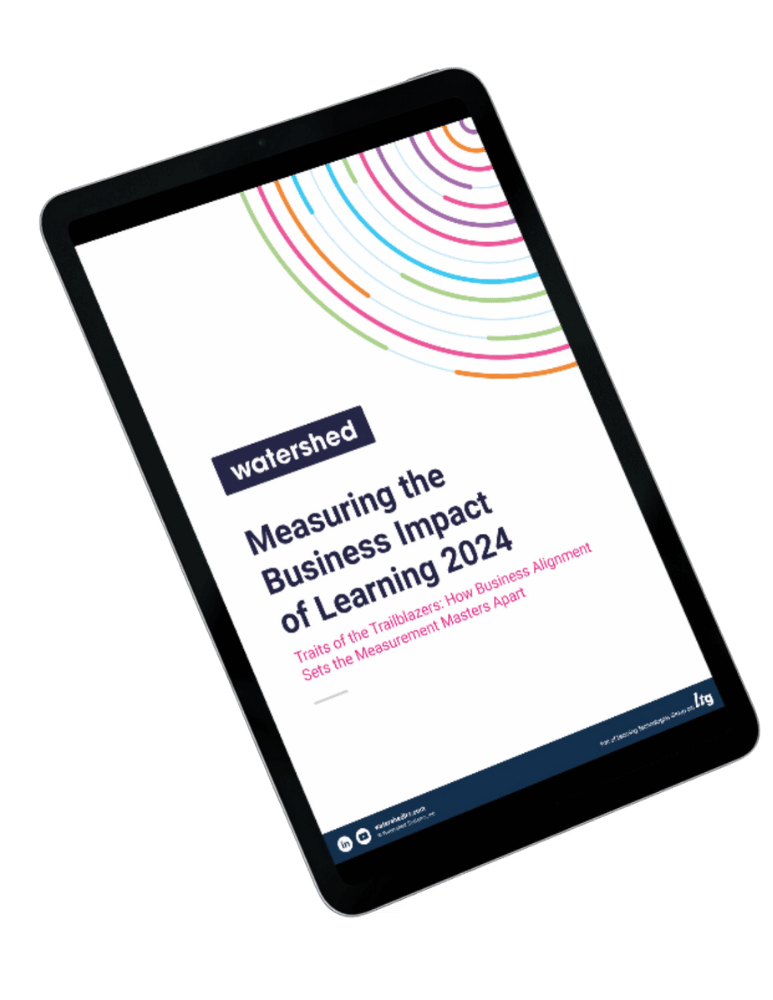In our last business goal alignment post, we discussed how to encourage cross-departmental teamwork in the workplace and the importance of lending a hand to those from whom you may eventually need help. However, you can’t really help your coworkers unless you know what’s needed or how to accomplish it. So in this post, we'll discuss why you need to take time to understand what’s critical for your peers to successfully reach their objectives.
TL;DR
There are many ways to get buy-in from internal stakeholders, and the most effective approaches should lead to partnerships rather than just permission. So, in summary:
- When they win, everyone wins—so step up and give a hand in other departments (without expectation of something in return).
- You don't have to start from scratch. Figure out what works and help recreate it.
- The work isn't over once you have an answer. Keep digging deeper and let that steer your course so you can tell an end-to-end story.
It all adds up in the end.
Because business objectives should ultimately lead to reaching key organizational priorities or goals, impact in any area is valuable. And understanding how you can contribute to your peers’ objectives is an ideal way to gain internal stakeholder buy-in for your initiatives while also aligning L&D with the organization’s broader business goals.
When you approach a new project, consider how your team’s training and data services can help those particular departments reach success. Share your vision while looking for metrics that are important to that particular project.
Recommended Resources
Discover and duplicate.
Let’s say the organizational goal is around increasing market share, and the sales department is the most likely team to impact that goal by introducing a new product to market. You can identify what worked well in past product launches (e.g., identify the top regions, teams, or employees), pinpoint commonalities, and then replicate them in the new product training.
On the other hand, perhaps there isn’t an obvious way to replicate the sales team’s past successes. Rather, there’s an area that needs improvement. And Brian Floyd, an L&D practitioner with more than 20 years' experience, shares a real-world example of addressing one such gap.
Brian Floyd spent more than 20 years being responsible for thousands of learners at The Behr Paint Company. After evaluating in-store Behr sales representatives and customer-affiliated store employees, Brian and his team quickly realized there were some significant gaps in Behr’s sales approach.
“Prior, training was always something that we just did—not something that drove initiatives or impacted the bottom line,” he says. “The industry is tightening,” he says. “And we had an enormous fiscal opportunity in defection to our competitors.
To address the challenge, Brian and his team created a curriculum-based approach around key behaviors and launched the program with a regular cadence. Using analytics, they established which regions were adopting these strategies quickly and which were taking a bit more time.
“Before the training, we saw little change,” he says. “The program had been in place for more than 18 months, with very little improvement. Training's involvement in the last six months has had an overall impact of 1,500 basis points, and some individual indicators shot up as much as 4,000 basis points. This success is helping us redefine training, and we just started a sister program for a different customer segment. This time around, training is involved at the beginning of a new initiative, rather than a bolt-on later because we were able to quantify our ROI.”
If you build it, data will come—and everyone wins.
If you build the learning record store (LRS) well, your results will yield even more questions. Chances are, these new questions will only increase interest and buy-in from other departments. This provides a great opportunity for you to offer to connect—and promote—their existing reports within L&D’s reporting, which will only continue to grow and strengthen your presence across the organization.
These small data feed additions can make your overall data collection invaluable. The more data you have, the more insight you'll gain into what's driving success across the organization. And, if you’re struggling to obtain data from certain departments or teams, call in some favors and ask a few internal customers for their assistance in helping you obtain those data sources.
This is where helping out other departments (with deeper connections) will play in your favor. If your success is tied to their success, they have a vested interest in helping you get what you need.
Many times, new projects also provide new key performance indicators (KPIs) and metrics, which you can then use in your reports to provide a more comprehensive view of how L&D is impacting overall organizational success.
Furthermore, the more information you can include in your reports also helps increase the chances of leadership having a vested interest in lobbying for data that may be more difficult for you to come by on your own. For example, if senior leaders are invested in project outcomes, requesting a simple data feed from IT becomes much easier.
A Recap: Business Goal Alignment
Join us for the last post in our Business Goal Alignment series, as we recap key takeaways. And be sure to sign up for Watershed Insights to have the next post sent right to your inbox.
About the author
As part of the Marketing team, Abbey is dedicated to managing our brand and overseeing our marketing communications, just to name a few.
Subscribe to our blog


